Shoulder Pain
Pain in the shoulder suggests a shoulder injury which is more common in athletes participating in sports such as swimming, tennis, pitching and weightlifting. The injuries are caused due to the over usage or repetitive motion of the arms.
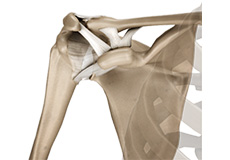
AC Joint Arthritis
The acromioclavicular joint is part of the shoulder joint. It is formed by the union of the acromion, a bony process of the shoulder blade, and the outer end of the collar bone or clavicle. The joint is lined by cartilage that gradually wears with age as well as with repeated overhead or shoulder level activities such as basketball. The condition is referred to as AC arthritis or acromioclavicular arthritis.

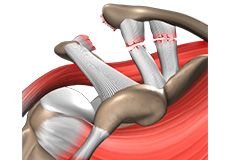
Shoulder Separation or AC Joint Dislocation
Acromioclavicular joint (AC joint) dislocation or shoulder separation is one of the most common injuries of the upper arm. It involves separation of the AC joint and injury to the ligaments that support the joint. The AC joint forms where the clavicle (collarbone) meets the shoulder blade (acromion).
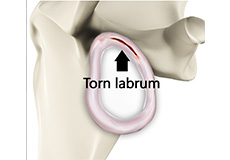
Shoulder Joint Tear (Glenoid Labrum Tear)
The shoulder joint is a “ball and socket” joint that enables the smooth gliding and thereby the movements of arms. However, it is inherently unstable because of the shallow socket. A soft rim of cartilage, the labrum lines the socket and deepens it so that it accommodates the head of the upper arm bone better.
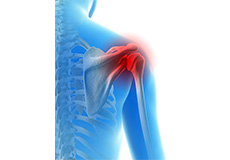
Shoulder Injuries in The Throwing Athlete
The shoulder is a shallow ball and socket joint, formed by the bone of the upper arm (humerus), which articulates with the shoulder blade in a cavity called the glenoid fossa.
The joint relies a great deal on surrounding soft-tissue structures such as tendons, ligaments and muscles (rotator cuff muscles) to maintain smooth motion and stability.
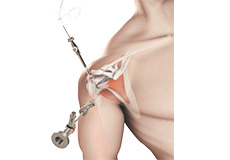
Biceps Tendon Repair
The biceps muscle is present on the front side of your upper arm and functions to help you bend and rotate your arm.
The biceps tendon is a tough band of connective fibrous tissue that attaches your biceps muscle to the bones in your shoulder on one side and the elbow on the other side.
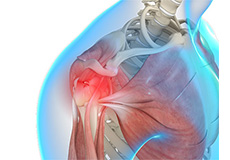
Shoulder Trauma
Shoulder injuries most commonly occur in athletes participating in sports such as swimming, tennis, pitching, and weightlifting. The injuries are caused due to the over usage or repetitive motion of the arms.

Clavicle Fracture (Broken Collarbone)
Clavicle fracture, also called broken collarbone is a very common sports injury seen in people who are involved in contact sports such as football and martial arts as well as impact sports such as motor racing. A direct blow over the shoulder that may occur during a fall on an outstretched arm or a motor vehicle accident may cause the clavicle bone to break.
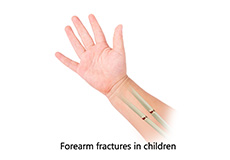
Forearm Fractures in Children
Pain in the shoulder suggests a shoulder injury which is more common in athletes participating in sports such as swimming, tennis, pitching and weightlifting. The injuries are caused due to the over usage or repetitive motion of the arms.

Fractured Proximal Humerus
Humerus is the upper arm bone and it forms two joints —shoulder joint and elbow joint. The proximal humerus is the upper end of arm bone that forms shoulder joint. Fractures of proximal humerus are common in elderly individuals suffering from osteoporosis.
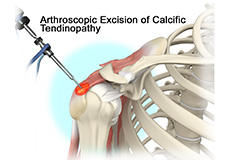
Calcific Tendinopathy
Calcific cuff tendinopathy is a problem with the shoulder's tendons and muscles. This condition occurs due to the formation of calcium deposits in the tendons (tissue which attaches muscle to bone) of the rotator cuff (group of muscles and tendons stabilising the shoulder). This calcium build-up causes inflammation of the tissues surrounding it, and intense shoulder pain.

Arthroscopic Excision of Calcific Tendinopathy
Calcific cuff tendinopathy is a problem with the shoulder's tendons and muscles. This condition occurs due to the formation of calcium deposits in the tendons (tissue which attaches muscle to bone) of the rotator cuff (group of muscles and tendons stabilising the shoulder). This calcium build-up causes inflammation of the tissues surrounding it, and intense shoulder pain.

